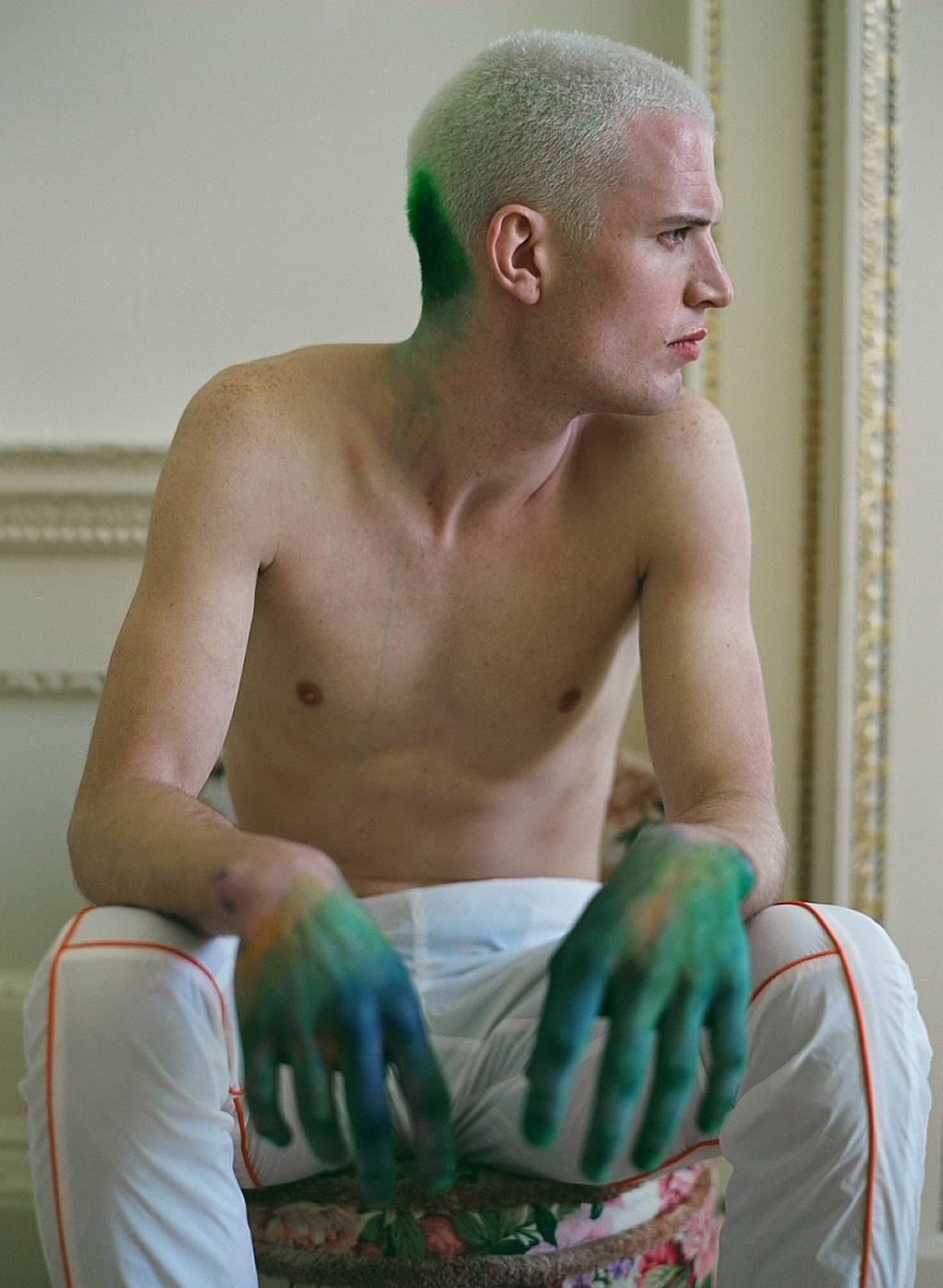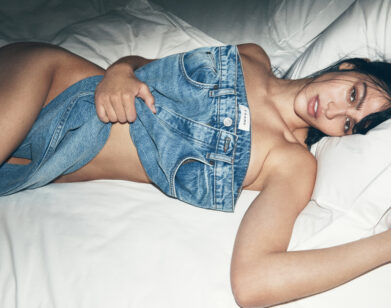Meadham Kirchhoff on Big Brother
Edward Meadham and Benjamin Kirchhoff aren’t so fond of establishment. The establishment, however, is growing rather partial to the rogue spirit of their label Meadham Kirchhoff, its emotionally charged universe of counterculture having become ubiquitous with strange beauty and a laissez-faire rejection of social (and fashionable) norms.
Hunkered down in the microcosm that is their East London studio, Edward and Benjamin have spent the past five seasons orchestrating what they call “a cosmology of women”—womenswear rife with punk girl-power imagery that has in equal measure captivated and confounded the fashion public. On Sunday, they countered this evolution by showing their first men’s collection in six years, eschewing the staid and sterile catwalk option for a dilapidated celebration of boys—in all their delinquent glory.
“Boys are messy creatures,” said Benjamin Kirchhoff, and that they were—their street-cast models sprawled themselves aimlessly across mattresses and Disney bedsheets, deck chairs, and lounges for the “static” presentation. Cluttering their separated “islands” was all manner of domestic debris, from last night’s pizza boxes to this morning’s cornflakes soaking in milk, Pepto-Bismol bottles, vintage porn, and a toilet cistern brimming with roses and cigarette butts. “The boys are a real variety. We made sure to meet them, to have a strong idea of who they are—that they were their own person. I wasn’t typecasting,” said Kirchhoff. There was, however, something prescriptive in words like “brother” and “wallflower” scrawled across the boys’ faces, and an unspoken mythology in their dip-dyed hands and hair. “I wanted to create a sense of family and community on set, yet at the same time the feeling of loneliness and being lost.”
To set the mood, the duo employed the scenography talents of Tony Hornecker, whose previous installations for London’s Royal Opera House and The Pale Blue Door traveling restaurant have included a patchwork of vintage house windows, door frames, and bicycle parts. Amongst the hodgepodge of battered furniture, television screens flickered scenes from ’90s cartoons like Pinky and the Brain and The Ren & Stimpy Show, as well as Kenneth Anger, Hitchcock, and Powell & Pressburger’s 1947 film Black Narcissus. Meadham and Kirchhoff ordered “anything that was dying or wilting” from their florist, Wild At Heart. Orchids lay strewn about, hydrangeas lay un-potted on the floor, and roses sat in soda bottles on the mantlepiece. It was a beautiful chaos.
The clothes brought together many mismatched layers of colour and print, in combinations that referenced everything from handicrafts to housing estates. Cable-knit Lurex sweaters were paired with shorts and trousers in soft pastel stripes, and floaty silk chiffon shirts were clustered with metal sequins or dusty florals. “I got obsessed by blue,” said Kirchhoff, “I wanted to have a blue that looked and acted violently in the collection. Then there’s all the accents of cartoon colours—like the lime green, yellow and orange.” Hyper-colour custom Nike Air Force Ones certainly lived up to that vision, encircled with brass anklets and beaded laces. Obscuring the faces of some models were ornate silk headscarves with goggle lenses picked out in curlicues of zardosi embroidery—a painstakingly-difficult metalwork technique dating back to the ancient Persia. They wore knitted beanies on top. “The ethnic references were purely there as a way to incorporate the textile element that I love,” said Kirchhoff. “I collect textiles from all over the place.” It’s this pointed subversion of heritage techniques and a depth of historical research that divides these two from London’s dirge of digital print—unapologetically and anarchistically so.







